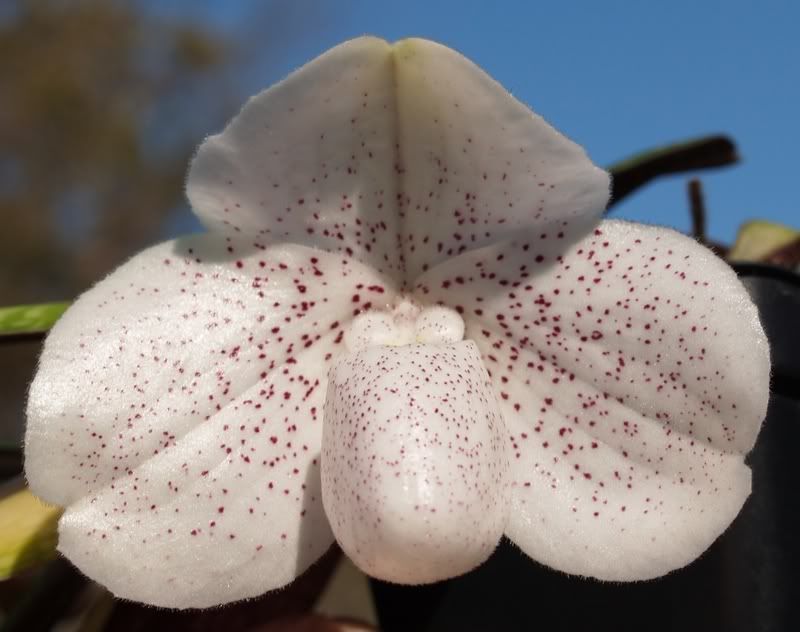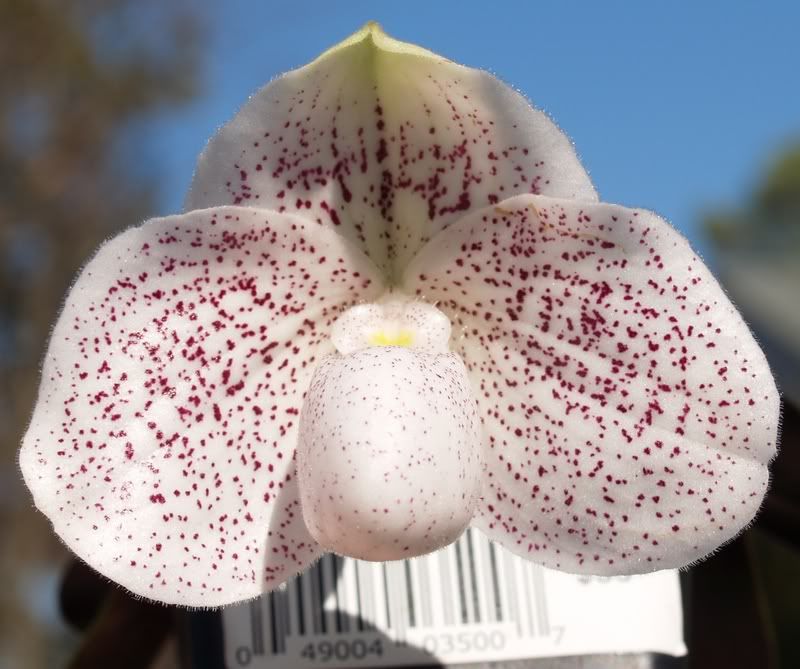SlipperFan
Addicted
This was posted on the OGD this morning by Viateur Boutot. It may eventually resolve many issues about species and their classes:
The following article can be read
auf deutsch
en espanol
en francais
in italiano
po polsku
[see the URL provided below]
"An international team of scientists has discovered a 'barcode' gene which can be used to distinguish between most plant species on Earth. The gene could help researchers to catalogue plants in species-rich areas, and monitor the trade in endangered plant species.
The work... partly funded by the EU, is published online by the journal Proceedings of the National Academies of Science (PNAS) [link, below].
DNA barcoding is a technique in which differences in a specific part of the genome are used to identify different species. While the technique is well established in animals, there is currently no universally accepted barcode for plants. The challenge for researchers is to find a stretch of the genome which varies widely between species but shows little variation within species.
In this... piece of research, scientists from the UK, South Africa and Costa Rica tested eight potential barcodes on over 1,600 plant species from two biodiversity hotspots: Mesoamerica and southern Africa. Costa Rica boasts one of the richest orchid floras in the world; because some orchid species are often hard to tell apart with the naked eye, they are an ideal candidate for testing DNA barcodes. Orchids are also under threat from deforestation and illegal trade, so are likely to benefit from the conservation applications of DNA barcoding.
...
The analyses revealed that a section of the 'matK' gene meets all the requirements of a potential DNA barcode. The sequence differs from species to species, but is almost identical in plants of the same species. The barcode is so accurate that the scientists were even able to use it to clear up a longstanding mystery.
Many orchid experts had suspected that what was officially one species of Costa Rican orchid was in fact two distinct species[names ?]. Investigations of the matK gene revealed that the experts' suspicions were well-founded; the orchids were indeed of two distinct species.
Ultimately the researchers hope to create a genetic database of the matK gene sequences of as many species as possible, so that samples can be compared to the database and accurately identified.
'In the future we'd like to see this idea of reading plants' genetic barcodes translated into a portable device that can be taken into any environment, which can quickly and easily analyse any plant sample's matK DNA and compare it to a vast database of information, allowing almost instantaneous identification,' commented Dr Vincent Savolainen of Imperial College London and the Royal Botanic Gardens, Kew, UK.
Although such a device is unlikely to be available for a number of years, it could have a large number of applications. 'There are so many circumstances in which traditional taxonomic identification of plant species is not practical - whether it be at ports and airports to check if species are being transported illegally, or places like Costa Rica where the sheer richness of one group of plants, like orchids, makes accurate cataloguing difficult,' explained Dr Savolainen.
All orchids are listed in Appendix 2 of CITES (the Convention on International Trade of Endangered Species), meaning a special permit is required for their trade. However, the most endangered species, such as the lady's slipper orchids[names] in Mesoamerica, are listed in Appendix 1, which means that their trade is prohibited.
...
the scientists note that the full potential of DNA barcoding will only be achieved if it is made available in all countries. 'If DNA barcoding is to achieve its goals, it must urgently become available to countries rich in biodiversity but poor in resources through efficient capacity-building and judicious funding programmes,' the researchers recommend.
...
PNAS:
http://www.pnas.org
...
Document Reference:
Lahaye, R et al.
2008 DNA barcoding the floras of biodiversity hotspots. PNAS, published online week of 4 February 2008."
URL : http://cordis.europa.eu/fetch?CALLER=EN_NEWS&ACTION=D&SESSION=&RCN=29105
The following article can be read
auf deutsch
en espanol
en francais
in italiano
po polsku
[see the URL provided below]
"An international team of scientists has discovered a 'barcode' gene which can be used to distinguish between most plant species on Earth. The gene could help researchers to catalogue plants in species-rich areas, and monitor the trade in endangered plant species.
The work... partly funded by the EU, is published online by the journal Proceedings of the National Academies of Science (PNAS) [link, below].
DNA barcoding is a technique in which differences in a specific part of the genome are used to identify different species. While the technique is well established in animals, there is currently no universally accepted barcode for plants. The challenge for researchers is to find a stretch of the genome which varies widely between species but shows little variation within species.
In this... piece of research, scientists from the UK, South Africa and Costa Rica tested eight potential barcodes on over 1,600 plant species from two biodiversity hotspots: Mesoamerica and southern Africa. Costa Rica boasts one of the richest orchid floras in the world; because some orchid species are often hard to tell apart with the naked eye, they are an ideal candidate for testing DNA barcodes. Orchids are also under threat from deforestation and illegal trade, so are likely to benefit from the conservation applications of DNA barcoding.
...
The analyses revealed that a section of the 'matK' gene meets all the requirements of a potential DNA barcode. The sequence differs from species to species, but is almost identical in plants of the same species. The barcode is so accurate that the scientists were even able to use it to clear up a longstanding mystery.
Many orchid experts had suspected that what was officially one species of Costa Rican orchid was in fact two distinct species[names ?]. Investigations of the matK gene revealed that the experts' suspicions were well-founded; the orchids were indeed of two distinct species.
Ultimately the researchers hope to create a genetic database of the matK gene sequences of as many species as possible, so that samples can be compared to the database and accurately identified.
'In the future we'd like to see this idea of reading plants' genetic barcodes translated into a portable device that can be taken into any environment, which can quickly and easily analyse any plant sample's matK DNA and compare it to a vast database of information, allowing almost instantaneous identification,' commented Dr Vincent Savolainen of Imperial College London and the Royal Botanic Gardens, Kew, UK.
Although such a device is unlikely to be available for a number of years, it could have a large number of applications. 'There are so many circumstances in which traditional taxonomic identification of plant species is not practical - whether it be at ports and airports to check if species are being transported illegally, or places like Costa Rica where the sheer richness of one group of plants, like orchids, makes accurate cataloguing difficult,' explained Dr Savolainen.
All orchids are listed in Appendix 2 of CITES (the Convention on International Trade of Endangered Species), meaning a special permit is required for their trade. However, the most endangered species, such as the lady's slipper orchids[names] in Mesoamerica, are listed in Appendix 1, which means that their trade is prohibited.
...
the scientists note that the full potential of DNA barcoding will only be achieved if it is made available in all countries. 'If DNA barcoding is to achieve its goals, it must urgently become available to countries rich in biodiversity but poor in resources through efficient capacity-building and judicious funding programmes,' the researchers recommend.
...
PNAS:
http://www.pnas.org
...
Document Reference:
Lahaye, R et al.
2008 DNA barcoding the floras of biodiversity hotspots. PNAS, published online week of 4 February 2008."
URL : http://cordis.europa.eu/fetch?CALLER=EN_NEWS&ACTION=D&SESSION=&RCN=29105





